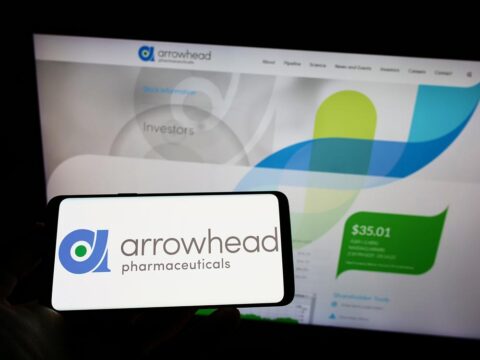Advertisment
New data from HGB-206 study show near elimination of sickle cell disease-related vaso-occlusive crises by LentiGlobin gene therapy and plans to file at FDA in 2021 .- bluebird bio.
bluebird bio, Inc. announced that new data from its ongoing Phase 1/II HGB-206 study of investigational LentiGlobin gene therapy for adult and adolescent patients with sickle cell disease (SCD) show a near-complete reduction of serious vaso-occlusive crises (VOCs) and acute chest syndrome (ACS)
These data are being presented at the Virtual Edition of the 25th European Hematology Association (EHA25) Annual Congress.
“Vaso-occlusive crises (VOCs) are the painful, life-threatening episodes that are the primary clinical manifestation of sickle cell disease. The nearly complete elimination of VOCs that we saw in this study is impressive and demonstrates the potential of LentiGlobin for SCD as a treatment for this serious disease,” said David Davidson, M.D., chief medical officer, bluebird bio. “These results illustrate the type of outcomes we believe are needed to provide truly meaningful improvements for people living with sickle cell disease. In addition, the improvement of laboratory measures of hemolysis and red cell physiology, with nearly pan-cellular distribution of the anti-sickling HbAT87Q, suggest LentiGlobin for SCD may substantially modify the causative pathophysiology of SCD. We are pleased to have reached a general agreement with the FDA on the clinical data required to support a submission for LentiGlobin for SCD and we plan to seek an accelerated approval”.
As of March 3, 2020, a total of 37 patients have been treated with LentiGlobin for SCD to-date in the HGB-205 (n=3) and HGB-206 (n=34) clinical studies. The HGB-206 total includes: Group A (n=7), B (n=2) and C (n=25).
HGB-206: Group C Updated Efficacy Results:In Group C of HGB-206, 25 patients were treated with LentiGlobin for SCD and have up to 24.8 months of follow-up (median of 12.1; min.-max.: 2.8—24.8 months). Results from Group C are as of March 3, 2020 and include efficacy data for 16 patients who had at least a Month 6 visit, and safety data for 18 patients, which includes two patients who were at least six months post-treatment but results from a Month 6 visit are not available.In 16 patients with six or more months of follow-up, median levels of gene therapy-derived anti-sickling hemoglobin, HbAT87Q, were maintained with HbAT87Q contributing at least 40% of total hemoglobin. At last visit reported, total hemoglobin ranged from 9.6 – 16.2 g/dL and HbAT87Q levels ranged from 2.7 – 9.4 g/dL. At Month 6 the production of HbAT87Q was associated with a reduction in the proportion of HbS in total hemoglobin. Patients had a median of less than 60% HbS. All patients in Group C were able to stop regular blood transfusions and remain off transfusions at three months post-treatment.
There was a 99.5% mean reduction in annualized rate of VOC and ACS among the 14 patients who had at least six months of follow-up and a history of VOCs or ACS, defined as four or more VOC or ACS events in the two years prior to treatment. These 14 patients had a median of eight events in the two years prior to treatment (min.-max.: 4 – 28 events). There were no reports of serious VOCs or ACS at up to 24 months post-treatment in patients with at least six months of follow-up (n=18). As previously reported, one non-serious Grade 2 VOC was observed in a patient approximately 3.5 months post-treatment with LentiGlobin for SCD.
Patients treated with LentiGlobin for SCD demonstrated improvement in key markers of hemolysis, which are indicators of the health of red blood cells. Lab results assessing these indicators were available for the majority of the 18 patients with 6 months of follow-up. The medians for reticulocyte counts (n=15), lactate dehydrogenase (LDH) levels (n=13) and total bilirubin (n=16) improved compared to screening and stabilized by Month 6. In patients with Month 24 data (n=5) these values approached the upper limit of normal by Month 24. These results suggest treatment with LentiGlobin for SCD is improving biological markers of sickle cell disease.
Assays were developed by bluebird bio to enable the detection of HbAT87Q and HbS protein in individual red blood cells as well as to assess if HbAT87Q was pancellular, present throughout all of a patient’s red blood cells. Samples from a subset of patients in Group C were assessed. In nine patients who had at least six months of follow-up, the average proportion of red blood cells positive for HbAT87Q was greater than 70%, and on average more than 85% of red blood cells contained HbAT87Q at 18 months post-treatment, suggesting near-complete pancellularity of HbAT87Q distribution.
HGB-206: Group C Safety Results : As of March 3, 2020, the safety data from all patients in HGB-206 are generally reflective of underlying SCD and the known side effects of hematopoietic stem cell collection and myeloablative conditioning. There were no serious adverse events related to LentiGlobin for SCD, and the non-serious, related adverse events (AEs) were mild-to-moderate in intensity and self-limited. One patient with a history of frequent pre-treatment VOE, pulmonary and systemic hypertension, venous thrombosis, obesity, sleep apnea and asthma had complete resolution of VOEs following treatment, but suffered sudden death 20 months after treatment with LentiGlobin for SCD. The patient’s autopsy revealed cardiac enlargement and fibrosis, and concluded the cause of death was cardiovascular, with contributions from SCD and asthma. The treating physician and an independent monitoring committee agreed this death was unlikely related to LentiGlobin for SCD gene therapy.
About HGB-206: HGB-206 is an ongoing, Phase 1/|II open-label study designed to evaluate the efficacy and safety of LentiGlobin gene therapy for SCD that includes three treatment cohorts: Groups A (n=7), B (n=2) and C (n=25). A refined manufacturing process that was designed to increase vector copy number (VCN) and improve engraftment potential of gene-modified stem cells was used for Group C. Group C patients also received LentiGlobin for SCD made from HSCs collected from peripheral blood after mobilization with plerixafor, rather than via bone marrow harvest, which was used in Groups A and B of HGB-206.
bluebird bio reached general agreement with the FDA that the clinical data package required to support a Biologics Licensing Application (BLA) submission for LentiGlobin for SCD will be based on data from a portion of patients in the HGB-206 study Group C that have already been treated. The planned submission will be based on an analysis using complete resolution of severe vaso-occlusive events (VOEs) as the primary endpoint with at least 18 months of follow-up post-treatment with LentiGlobin for SCD. Globin response will be used as a key secondary endpoint. bluebird bio anticipates additional guidance from the FDA regarding the commercial manufacturing process, including suspension lentiviral vector. bluebird bio announced in a May 11, 2020 press release it plans to seek an accelerated approval and expects to submit the U.S. BLA for SCD in the second half of 2021.





